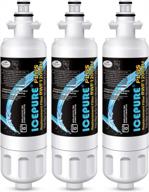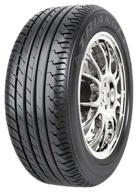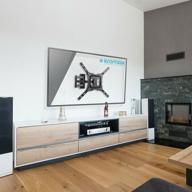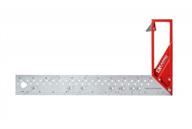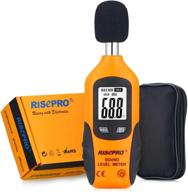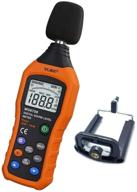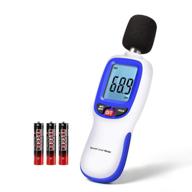Choosing the Right Sound Level Meter for Your Needs
Selecting the appropriate sound level meter for your application is crucial for obtaining accurate and reliable noise measurements. With different types of sound level meters available, it's important to understand your specific needs to choose the right one. Here are some key factors to consider when choosing a sound level meter:
Measurement Range
The decibel (dB) range of the sound level meter should match the expected noise levels you'll be measuring. Handheld meters typically have a 30-130 dB range, while professional grade meters can measure from 10-140 dB for very quiet to extremely loud environments.
Accuracy
Sound level meters fall into Type/Class 1 or 2, with Type 1 being more accurate. Type 1 has ±1 dB accuracy compared to ±2 dB for Type 2. If you need precise measurements, Type 1 or Class 1 is recommended.
Frequency Weighting
The two main weightings are A and C. A-weighting is ideal for environmental noise measurements, while C-weighting is suitable for measuring sounds like gunshots. Select a meter that can switch between these weightings.
Data Logging
Meters with data logging allow you to record measurements over time for further analysis. This is useful for occupational or environmental noise monitoring. Consider the logging interval, capacity, and download method.
Features
- Real-time octave band filters - break down sound into different frequency bands
- Data storage - saving measurement data for transfer to a computer
- PC connectivity - transfer data via USB, Bluetooth or WiFi
- Microphone types - standard, long or extended range
- Tripod mount - for stable, fixed position measurements
Ease of Use
Look for sound level meters that are intuitive and easy to operate, with clear displays and settings. Auto-ranging and one-touch operation also provide convenience.
Price
In general, handheld consumer meters cost $100-500, while professional grade meters run from $500-2000. Consider paying more for accuracy, features and durability if sound measurements are critical.
Brands
Top sound level meter manufacturers include Brüel & Kjær, Cirrus Research, Extech and Casella. Stick with reputable brands for quality and performance.
Choosing the right sound level meter takes some careful consideration, but identifying your key requirements and priorities will guide you to the ideal meter for your needs and budget.
Types of Sound Level Meters and Their Key Features
There are various types of sound level meters suitable for different noise measurement applications. Here is an overview of the main kinds of sound level meters and their key features:
Handheld Sound Level Meters
- Portable and lightweight
- Ideal for spot checks and field use
- Measure 30-130 dB sound levels
- Simple operation with built-in mic
- Low cost basic models start around $100
Professional Sound Level Meters
- Advanced features for in-depth analysis
- Detachable calibrated microphone
- Measure down to 10 dB sound levels
- Accuracy to ±1.5 dB
- Data logging capacity
- Price range $500 - $1500
Noise Dosimeters
- Measure cumulative noise exposure
- Lightweight design for attaching to individual
- Calculate noise dose percentages
- Help assess occupational noise hazards
- Average pricing around $1000
Sound Level Meters with Octave Band Filters
- Analyze sound in distinct frequency bands
- Identify noise sources in each octave band
- Determine effective noise control solutions
- Added capability for $1000-2000 range
Integrating Sound Level Meters
- Calculate average noise levels over time
- Ideal for environmental monitoring
- Measure total noise exposure
- Advanced data analysis features
- Prices from $1500 up
Selecting the right type of sound level meter depends on your specific testing requirements, accuracy needs and budget. However, choosing a quality meter from a reputable manufacturer is recommended for reliable measurements.
Top Applications and Uses for Sound Level Meters
Sound level meters have become an essential tool for measuring and analyzing noise in a wide range of environments. Here are some of the top applications and uses for these devices:
Occupational Noise Monitoring
Sound level meters are routinely used to measure noise exposure in workplace and industrial settings. Examples include:
- Factories - monitor noise near machinery and production lines
- Construction sites - assess noise from equipment and tools
- Entertainment venues - measure sound exposure of musicians, DJs, etc.
- Motor vehicle repair - evaluate noise produced by air tools and engines
The noise dosimeter function allows occupational safety managers to determine if noise levels exceed permissible exposure limits defined by OSHA hearing conservation regulations.
Environmental Noise Surveys
Sound level meters help measure and analyze environmental noise pollution from sources like:
- Road, rail and aircraft traffic
- Commercial and industrial activities
- Construction and resource extraction work
- Recreational events, parks and public gatherings
Long-term monitoring is conducted near schools, hospitals and residential areas to assess community noise and ensure compliance with local ordinances.
Product Testing
Manufacturers utilize sound level meters to determine noise ratings for products like:
- Home appliances - refrigerators, washers, dryers, etc.
- Power tools - saws, drills, sanders, leaf blowers
- Office equipment - computers, printers, copiers, shredders
- Audio equipment - loudspeakers, microphones, headphones
Testing helps optimize designs to meet noise regulations and customer expectations.
With such diverse applications, sound level meters prove indispensable for controlling noise, safeguarding hearing health and ensuring regulatory compliance across many industries.
How to Properly Use a Sound Level Meter for Accurate Measurements
Sound level meters are sophisticated devices that require proper techniques to obtain accurate noise level readings. Here are some key guidelines on using a sound level meter correctly:
Understand the Settings
Sound level meters have various settings that affect measurements, like:
- Frequency weighting - A, C, Z
- Response time/time weighting - Fast, Slow
- Measurement range - 30-80 dB, 50-100 dB, etc.
- Octave band filters - for frequency analysis
Read the manual to learn the optimal settings for your application.
Calibrate the Meter
Calibrate the sound level meter regularly using an acoustic calibrator producing a known SPL (sound pressure level) at a set frequency like 1000 Hz. This ensures accuracy of measurements.
Position the Microphone Properly
- Point microphone at the dominant noise source
- Place at ear height if assessing human exposure
- Use a windscreen for outdoor measurements
- Mount on tripod for hands-free operation
Observe the Measurement Field
The sound field should be free of obstructions that can influence readings. Position yourself appropriately to avoid affecting the measurements.
Take Measurements from Fixed Positions
For noise surveys, take measurements from pre-determined spots marked on a site map to ensure consistency.
Allow Time for Readings to Stabilize
Monitor the decibel readings over 15-30 seconds until the values stabilize before recording the result.
Account for Background Noise
If background noise is significant, consider taking separate background readings that can be subtracted from the total.
Take Multiple Readings
Take several readings at each measurement point and use the average value to get more representative results.
Use Data Logging for Long-Term Monitoring
For noise exposure over extended periods, utilize the data logging features to record values at set intervals, like every 5 or 15 minutes.
Following these best practices for sound level meter use will help obtain more valid, reliable and defensible noise measurements for any application.
Comparing Handheld, Professional and Industrial Sound Meters
When selecting a sound level meter for your application, it helps to compare the capabilities of the different meter types available.
Handheld Sound Level Meters
- Compact and portable
- Integrated microphone and display
- Basic measurement parameters
- Best for spot checks and field surveys
- Limitations:
- Narrower measurement range (30-130 dB)
- Reduced accuracy (±3-5 dB)
- Limited analysis functions
- Economical prices from $100-$500
Professional Sound Level Meters
- Advanced measurement capabilities
- Detachable calibrated microphone
- Lower noise floors down to 10 dB
- Improved accuracy to ±1.5 dB
- Enhanced data analysis
- Expanded feature options
- Ideal for detailed occupational and environmental noise surveys
- Moderate prices from $500-$1500
Industrial Sound Level Meters
- Specialized features for intense industrial environments
- Extremely low noise floors below 0 dB
- Maximum measurement ranges up to 140+ dB
- Temperature and humidity compensation
- Multi-channel testing capabilities
- Comprehensive diagnostic information
- Networking for real-time data monitoring
- Premium prices from $2000 up
In summary, handheld meters offer portability and affordability for basic measurements, while professional and industrial meters provide enhanced performance and analysis for more rigorous noise testing needs.
Consider the accuracy, features, analysis, and budget you require to select the sound level meter type that aligns best with your noise measurement application.
Sound Level Meter Calibration - Why It's Important and How to Do It
Proper calibration of sound level meters is essential for obtaining accurate and reliable noise measurements. Here's a look at why calibration matters and how to perform it correctly.
Why Calibrate Sound Level Meters?
There are a few key reasons why regular calibration is crucial:
- Ensures precision and accuracy of measurements
- Accounts for sensitivity changes in microphones over time
- Adjusts internal components that can drift from their standard settings
- Provides traceability to reference calibration standards
- Verifies conformance with specifications from regulatory bodies
In short, calibration eliminates measurement errors and provides confidence in noise data.
How Often to Calibrate
Sound level meters should be calibrated:
- Before first use out of the box
- At periodic intervals, such as monthly or quarterly
- After exposure to physical shock or extreme temperatures
- When accuracy is questionable or measurements seem inconsistent
Calibration Process
Calibration requires an acoustic calibrator, which generates a known sound pressure level at a specific frequency. To calibrate a sound level meter:
- Turn on and set up the meter and calibrator
- Plug the calibrator's coupler over the meter's microphone
- Initiate the calibration setting on the meter
- Actuate the calibrator to emit the test tone at a set dB level
- The meter will detect the tone and adjust its response accordingly
- The display will confirm when calibration is complete
- Repeat for other meter settings (range, frequency, etc.)
The calibration process takes just a minute or two to complete. Documentation provided after calibration verifies the instrument's accuracy.
Calibration Services
Many sound level meter manufacturers offer factory calibration services where units are shipped back, tested extensively, and returned with updated calibration certification.
Maintaining current calibration ensures your sound level meter performs exactly as specified, providing noise data you can thoroughly rely on.
Tips for Selecting the Best Sound Level Meter for Your Budget
Choosing an appropriate sound level meter doesn't have to break the bank. Here are some tips for selecting the best model for your budget and needs:
Determine Key Specifications
Consider the measurement range, accuracy level, frequency range, weighting scales, and analysis features you require. This will help narrow down suitable models.
Handheld or Professional
Handheld meters are more affordable at $100-$500, while professional models with more capabilities run from $500-$1500. Decide which is right for your application.
New or Used
Buying used can save substantially, but be sure to get proof of current and historical calibration. New models come with warranties.
Smartphone Apps
For very basic measurements, there are sound level meter apps available for under $10. But note apps have limited accuracy.
Rental Options
Renting a higher-grade meter short-term can be cost-effective if you only need it periodically.
Prioritize Key Features
Focus your budget on must-have capabilities like specific measurement ranges, data logging, octave band filters etc. Add convenience features later.
Package Deals
Look for packages that include accessories like tripods, windscreens and carrying cases to save money.
Additional Costs
Factor in calibration services and data analysis software which add to the overall cost.
Scalable Models
Some meters allow you to start basic and add functionality later through plug-in modules when budget allows.
Future Needs
Think about long-term requirements if this meter will become your workhorse for years to come.
Being strategic about your sound level meter purchase can help maximize value and performance. Partnering with an expert sales rep can also make sure you get the ideal meter to fit your budget.
Discover The Best Sound Measurement Tools For Your Needs
If you are looking for the best sound measurement tools for your needs, there are several options available in the market. Here are some of the best sound measurement tools that you can consider:
- SVAN 979 - This is a top-of-the-range class 1 integrating sound level meter that is packed with a diverse set of features, making it ideal for a wide range of tasks.
- Protmex PT02 - This is a simple and extremely affordable decibel meter that is ideal for measuring sound levels in music venues.
- RISEPRO Digital Sound Level Meter - This is a portable and easy-to-use decibel meter that is ideal for measuring noise levels in classrooms, homes, and on the street.
- BAFX-3370 - This is a simple, accurate, and high-quality decibel meter that is widely considered the best decibel meter among professionals.
- REED 8080 - This is the best overall sound level meter that is capable of recording data and producing reports and graphs of your data.
- Smartphone Apps - There are several smartphone apps available that can measure decibels to determine if your environment exposes you to harmful noises that may cause permanent or temporary noise-induced hearing loss. Some of the best apps include Decibel Pro and SPL Meter.
What Are The Differences Between Class 1 And Class 2 Noise Level Meters?
The differences between class 1 and class 2 noise level meters are mainly in terms of accuracy and frequency range. Here are the key differences between the two:
Class 1 Sound Level Meters:
Class 2 Sound Level Meters:
Overall, class 1 sound level meters are more accurate and have a wider frequency range, while class 2 sound level meters are less accurate but more affordable and suitable for basic noise assessments. The choice between the two depends on the specific application and the level of accuracy required.
Similar products
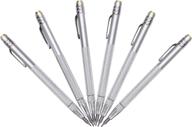

38 Review

What Are Some Common Applications For Class 1 Noise Level Meters?
Class 1 sound level meters are considered to be more accurate than class 2 meters and are ideal for laboratory use, environmental applications, boundary noise, building acoustics, and traffic assessments. They are also suitable for use in applications where high accuracy is critical, such as research/study, traffic assessment, and environmental noise surveys. Class 1 sound level meters are capable of measuring sound over a wider frequency range than class 2 meters and meet narrower tolerances for all of its performance criteria. They are also more expensive than class 2 meters. Some common applications for class 1 noise level meters include research/study, traffic assessment, environmental noise surveys, and building acoustics.





